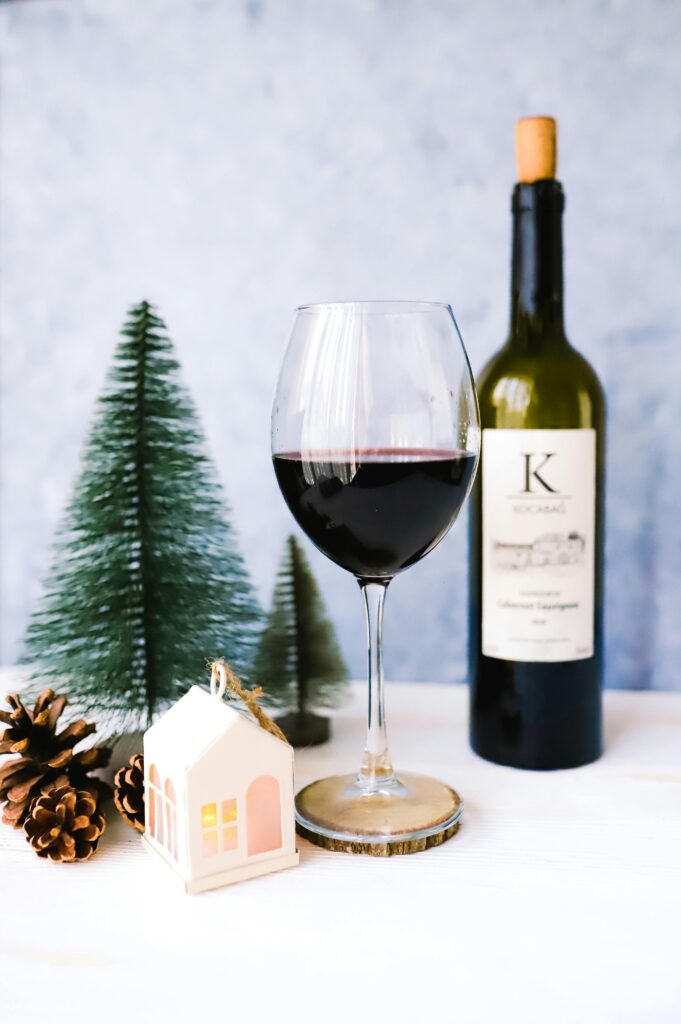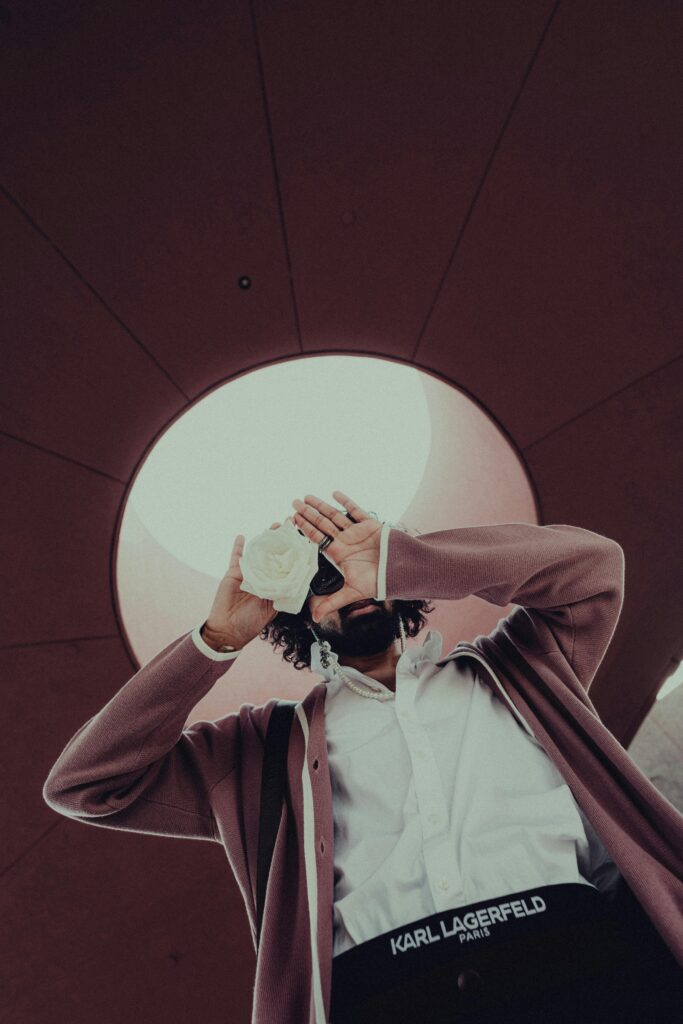Step into the world of bourbon and discover the hidden artistry behind its label and bottle design. In this article, you will uncover the intricate details and thoughtfulness that goes into crafting the perfect aesthetic for bourbon. From elegant label designs to unique bottle shapes, each element is meticulously curated to enhance your drinking experience. Get ready to appreciate the art that lies within every bourbon bottle as we delve into the fascinating world of label and bottle design.
The Importance of Bourbon Label and Bottle Design
When it comes to bourbon, the label and bottle design play a crucial role in creating a lasting impression on consumers. The aesthetic appeal of a bourbon bottle can greatly impact a customer’s decision to purchase the product. A well-designed label and bottle not only catch the eye but also reflect the brand identity and communicate the quality and craftsmanship of the bourbon.
Creating a Lasting Impression
Bourbon label and bottle design have the power to make a lasting impression on consumers. It is often the first thing that catches your eye when browsing through a liquor store or perusing an online selection. Whether it’s an elegantly shaped bottle or a visually striking label, a well-designed presentation can pique your curiosity and make you want to explore the bourbon further.
Reflecting Brand Identity
Label and bottle design are essential in reflecting the brand identity of a bourbon. Each bourbon has its own unique characteristics, and the design elements should align with these traits. From typography and color choices to iconography and logos, every aspect of the design should convey the brand’s values, history, and overall personality. A cohesive design that reinforces the brand identity helps create a distinct visual identity in a crowded market.
Communicating Quality and Craftsmanship
The label and bottle design of a bourbon serve as a visual representation of the product’s quality and craftsmanship. A well-designed label can signify the care and attention to detail that goes into producing the bourbon. Whether it’s the choice of an elegant font, a sophisticated color palette, or the use of intricate iconography, these design elements combine to create an overall impression of craftsmanship and quality. By visually communicating these attributes, a bourbon label and bottle design can instill confidence in consumers and make them more likely to choose the product.
Historical Influences on Bourbon Label and Bottle Design
To truly understand the significance of bourbon label and bottle design, it is necessary to examine the historical influences that have shaped these designs over time.
Tracing the Origins of Bourbon
Bourbon has a rich history that dates back to the late 18th century. As one of America’s oldest spirits, bourbon has been influenced by various cultural and historical factors. The design of bourbon labels and bottles has evolved alongside the spirit itself, reflecting changes in societal tastes and design trends.
Early Bourbon Packaging
In the early days of bourbon production, packaging often consisted of simple glass bottles with minimal labeling. These bottles were functional, serving the primary purpose of holding and transporting the spirit. As bourbon production grew and entered the commercial market, the need for attractive packaging became more apparent. Distilleries began to experiment with labeling and bottle design, incorporating decorative elements to make their products stand out.
Evolution of Label and Bottle Design
Over the years, bourbon label and bottle design have undergone significant transformations. From ornate and intricate designs in the late 19th century to sleek and modern approaches in the 21st century, the evolution of design reflects changes in consumer preferences and design trends. The artistry and creativity of distilleries and designers have played a vital role in shaping the aesthetic of bourbon label and bottle design as we know it today.

Elements of Bourbon Label Design
Bourbon label design encompasses various elements that contribute to its overall aesthetic appeal and communicative power.
Typography and Fonts
The choice of typography and fonts is crucial in conveying the personality and image of a bourbon. Serif fonts often evoke a sense of tradition and elegance, while sans-serif fonts can lend a more modern and contemporary feel. Distilleries carefully consider the typeface and letterforms to ensure that the typography aligns with the brand’s identity and overall design aesthetic.
Color Palettes
Color plays a vital role in setting the tone and mood of a bourbon label. Rich, warm tones like deep reds, browns, and golds are often associated with bourbon, evoking a sense of tradition and luxury. The careful selection of color palettes can create visual harmony and enhance the overall appeal of the label design.
Iconography and Logos
Iconography and logos are essential elements in bourbon label design, as they help establish brand recognition and convey key messages. Whether it’s a carefully crafted logo representing the distillery’s heritage or symbolic iconography representing the bourbon’s unique characteristics, these visual elements serve as powerful brand ambassadors on the label.
Design Trends in Bourbon Label and Bottle Artistry
Bourbon label and bottle designs encompass various styles and trends that cater to different preferences and aesthetics.
Traditional and Classic Designs
Traditional and classic designs draw inspiration from historical labels and bottles. Ornate borders, intricate illustrations, and vintage-inspired typography are often featured in these designs, capturing the timeless appeal of bourbon.
Minimalist and Contemporary Approaches
Minimalist and contemporary designs, on the other hand, embrace simplicity and clean lines. These designs often feature sleek typography, a minimalist color palette, and subtle detailing, creating a modern and sophisticated look.
Vintage and Retro Styles
Vintage and retro styles have experienced a resurgence in recent years. Distilleries are increasingly adopting design elements from the past, incorporating nostalgic imagery and typography to evoke a sense of authenticity and heritage.

The Role of Bottle Shape and Material in Bourbon Design
Bourbon bottle design extends beyond the label itself – the shape and material of the bottle themselves contribute to the overall aesthetic.
Unique Bottle Shapes
Distinct bottle shapes can make a bourbon stand out on the shelves. From classic square bottles to elegant flasks and decanter-like designs, the shape of the bottle can enhance the visual impact and impression a bourbon makes.
Glass vs. Ceramic Bottles
Bourbon bottles are primarily made of glass, but some distilleries experiment with ceramic bottles. Ceramic bottles can evoke a sense of elegance and craftsmanship, standing out from the typical glass bottles. The choice of material can further enhance the overall aesthetic and appeal of the bourbon.
Embellishments and Details
Bourbon bottle design often incorporates embellishments and detailing that add visual interest and a touch of luxury. From etched designs in the glass to embossed branding and labels, these small details contribute to the overall artistry of the bottle design.
Visual Storytelling: Narratives on Bourbon Labels
Bourbon labels are not just about aesthetics; they also serve as vehicles for storytelling and conveying important aspects of the brand and the product.
Depicting Distillery History
Many bourbon labels feature visuals and text that share the distillery’s history and heritage. From illustrations of the founding members to descriptions of the distillery’s origins, these narratives add depth and character to the bourbon, creating a deeper connection with consumers.
Celebrating Distinctive Ingredients
Bourbons are known for their unique flavor profiles, often resulting from distinct ingredients. Labels can showcase key ingredients, such as corn, rye, or barley, through illustrations or text, highlighting the bourbon’s distinctive characteristics and enticing consumers with its flavor profile.
Showcasing Production Process
Labels can also provide insights into the bourbon production process, from the selection of grains to the barrel aging techniques. These visuals and descriptions serve as a window into the craftsmanship that goes into producing the bourbon and help consumers appreciate the attention to detail and artistry involved.

The Influence of Whiskey Regulations on Label and Bottle Design
Whiskey regulations play a significant role in shaping bourbon label and bottle design, ensuring transparency and providing consumers with key information.
Regulatory Requirements
Bourbon labels must comply with regulations set by the Alcohol and Tobacco Tax and Trade Bureau (TTB). These regulations outline specific requirements for the inclusion of information such as the bourbon’s age, proof, and country of origin. Distilleries must carefully craft their labels to meet these requirements while still maintaining their unique design aesthetic.
Navigating Label Terminology
Bourbon labels often feature specific terminology that helps consumers understand the characteristics of the bourbon. Terms like “small batch,” “single barrel,” and “straight bourbon” indicate specific production methods and quality standards. Designers must find creative ways to incorporate these terms into the label design without compromising its overall visual appeal.
Balancing Tradition and Innovation
Whiskey regulations can both limit and inspire bourbon label and bottle design. While traditional elements are often expected in bourbon packaging, distilleries and designers are continuously finding ways to introduce innovative and creative approaches that push the boundaries of tradition while still adhering to the regulations.
Marketing and Consumer Appeal in Bourbon Design
Bourbon label and bottle design have a significant impact on marketing and consumer appeal, allowing distilleries to target different demographics and cater to specific preferences.
Targeting Different Demographics
Bourbon labels can be tailored to attract different demographics. Some labels appeal to collectors and enthusiasts by showcasing limited edition releases and emphasizing rarity. Others may target a younger demographic with bold and contemporary designs. By understanding their target market, distilleries can design labels that resonate with a specific audience.
Appealing to Collectors and Enthusiasts
Bourbon collectors and enthusiasts often appreciate unique and visually striking bottle designs. Distilleries may release special editions or limited runs featuring elaborate packaging or unique bottle shapes to appeal to this market. Collectors are drawn to the exclusivity and artistry of these designs, making them highly sought after.
Utilizing Limited Editions and Special Releases
Limited editions and special releases provide an opportunity for distilleries to experiment with innovative label and bottle designs that capture the attention of both collectors and casual consumers. These releases often feature distinctive packaging and bold visuals, creating a sense of excitement and desirability around the product.
Bourbon Label and Bottle Design as Artistic Expression
Bourbon label and bottle design are more than just packaging – they are forms of artistic expression that reflect the collaboration between distilleries and designers.
Collaborations with Artists and Designers
Many distilleries collaborate with artists and designers to create unique label and bottle designs that push the boundaries of creativity. These partnerships result in truly artistic expressions that elevate the aesthetic appeal of bourbon packaging and create collectible pieces of art.
Exploring Creative Boundaries
Bourbon label and bottle design provide a creative platform for designers to explore new boundaries and experiment with innovative ideas. From unconventional typography and color choices to abstract illustrations and unconventional bottle shapes, designers are continually pushing the boundaries of what is considered traditional in bourbon design.
Balancing Brand Consistency and Artistic Freedom
While creative freedom is essential in bourbon label and bottle design, it is equally important to maintain brand consistency. Designers must strike a balance between artistic expression and aligning the design with the brand’s identity and overall aesthetic. This balancing act ensures that the design remains true to the brand while still pushing boundaries and capturing the attention of consumers.
The Future of Bourbon Label and Bottle Design
As the bourbon industry continues to evolve, so too will the design of bourbon labels and bottles. Several factors will shape the future of this artistry.
Innovations in Packaging Technology
Advancements in packaging technology provide opportunities for exciting and innovative bourbon label and bottle designs. From embossing and foiling techniques to interactive elements and smart packaging, the future holds endless possibilities for creating immersive and engaging experiences through bourbon packaging design.
Adapting to Changing Consumer Preferences
Consumer preferences are constantly evolving, and bourbon label and bottle designs must adapt to these changes. Distilleries must stay attuned to shifting trends, aesthetics, and consumer expectations to ensure their designs remain relevant and appealing to the target audience.
Global Influence on Design Trends
As bourbon gains popularity worldwide, global influences on design trends will become increasingly prevalent. Different cultural perspectives and design aesthetics may inspire new directions in bourbon label and bottle design. This international exchange of ideas will contribute to the continued evolution and diversification of bourbon design.
In conclusion, bourbon label and bottle design play a vital role in creating a lasting impression, reflecting brand identity, and communicating the quality and craftsmanship of the spirit. The historical influences, elements of design, and various trends in bourbon design all contribute to the artistry and aesthetic appeal of the packaging. As the industry continues to evolve, bourbon label and bottle design will embrace innovation, adapt to changing preferences, and draw inspiration from global influences, shaping the future of this captivating art form.
